12 of the most striking flowers in Silvermine Nature Reserve and the month they bloom.
I asked flower fundi, Corinne Merry, co-author of Quick ID Guide: Wild Flowers of the Cape Peninsula, to identify one special flower per month to look out for if hiking in the Silvermine section of Table Mountain National Park.
A floral hotspot at the heart of the Cape Floral Region Protected Areas World Heritage Site, the Silvermine section of Table Mountain National Park is known for its diverse flora and high level of endemism. We’ve identified one flashy flower per month to help you get to grips with some of the reserve’s botanical treasures – some prolific species, others harder to spot specials.
A floral hotspot at the heart of the Cape Floral Region Protected Areas World Heritage Site, the Silvermine section of Table Mountain National Park is known for its diverse flora and high level of endemism. We’ve identified one flashy flower per month to help you get to grips with some of the reserve’s botanical treasures – some prolific species, others harder to spot specials.
Shop for a cause
Conservation Mag is an Amazon affiliate, by clicking on the links to do your shopping you support us without paying anything extra.
Shop on amazon.com | amazon.co.uk
Shop on amazon.com | amazon.co.uk
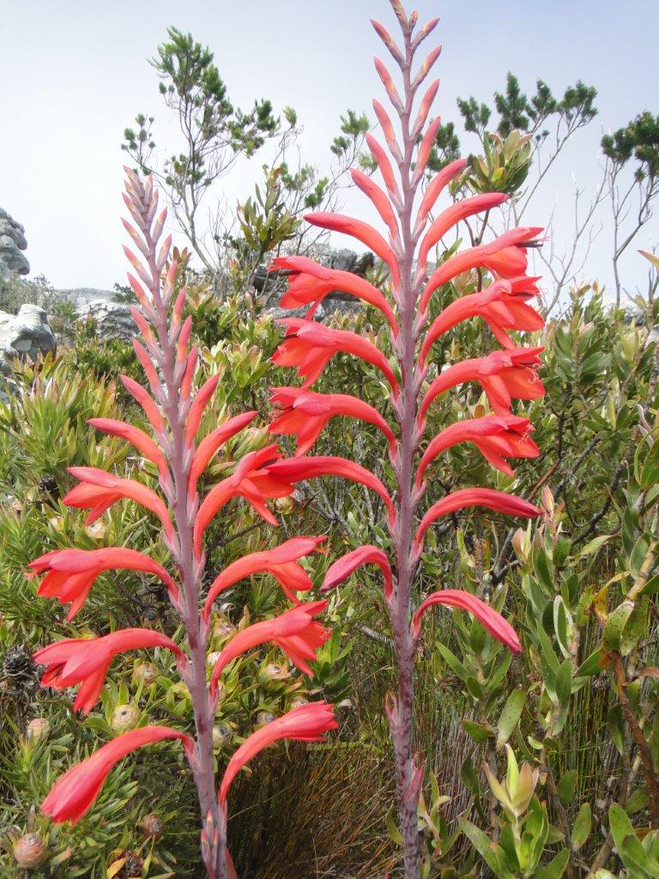
Flowering in January: Table Mountain Watsonia
Watsonia tabularis (family Iridaceae)
This ‘flashy flower’ is endemic to the Cape Peninsula. It flowers in the hot summer months but is particularly prolific after the fire. It stands tall (up to 1.75m) and can be seen sticking out above the surrounding fynbos.
This ‘flashy flower’ is endemic to the Cape Peninsula. It flowers in the hot summer months but is particularly prolific after the fire. It stands tall (up to 1.75m) and can be seen sticking out above the surrounding fynbos.
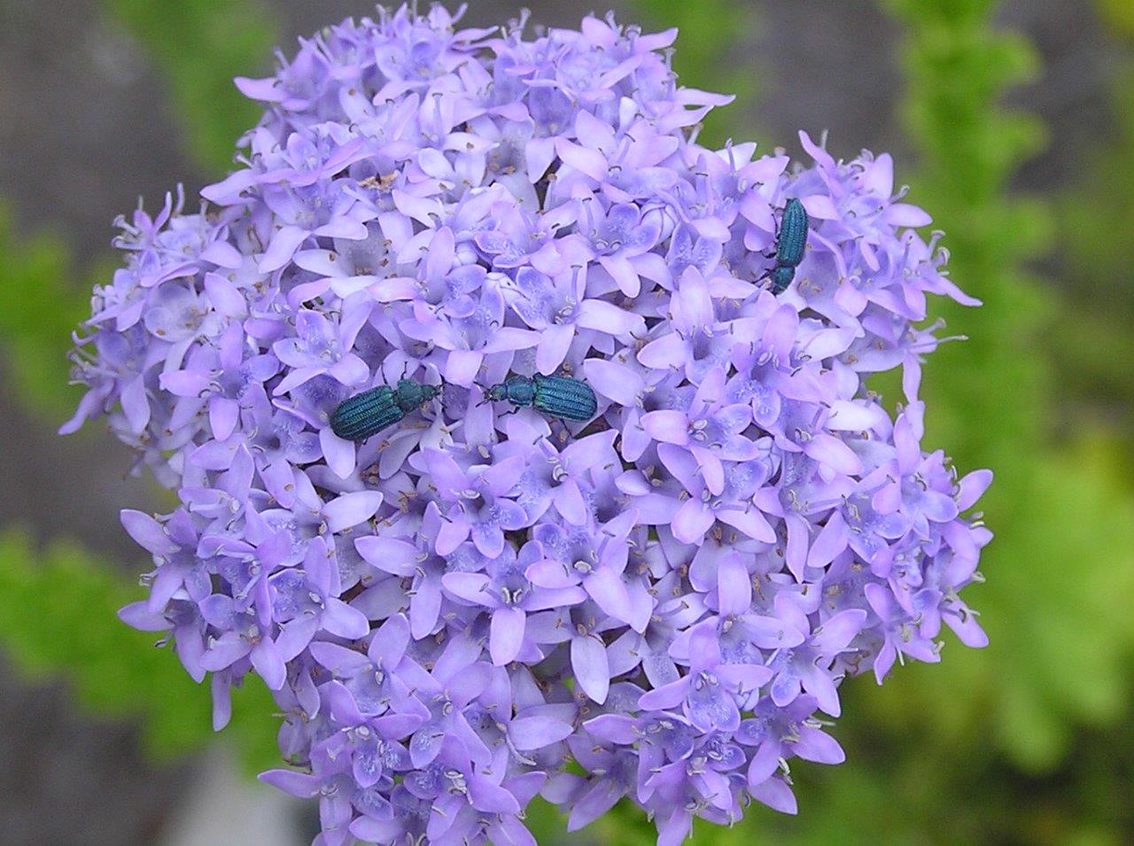
Flowering in February: Purple Powderpuff
Pseudoselago serrata (family Scrophulariaceae)
A beautiful lilac head of many small flowers with a delicate scent. This is very similar to the Pseudoselago spuria which flowers earlier. P. serrata has leaves with a serrated edge which distinguished it from P. spuria which has long thin leaves.
A beautiful lilac head of many small flowers with a delicate scent. This is very similar to the Pseudoselago spuria which flowers earlier. P. serrata has leaves with a serrated edge which distinguished it from P. spuria which has long thin leaves.

Flowering in March: Cluster Disa
Disa ferruginea (family Orchidaceae)
This flowerhead consists of a cluster of many small flowers, hence its common name. It has no nectar so in order to attract its pollinator it mimics the Tritoniopsis tritacea, which flowers at the same time in the same sort of habitat. The pollinator is the Aeropetales tulbaghia butterfly, known as the Table Mountain beauty, which targets red flowers.
This flowerhead consists of a cluster of many small flowers, hence its common name. It has no nectar so in order to attract its pollinator it mimics the Tritoniopsis tritacea, which flowers at the same time in the same sort of habitat. The pollinator is the Aeropetales tulbaghia butterfly, known as the Table Mountain beauty, which targets red flowers.
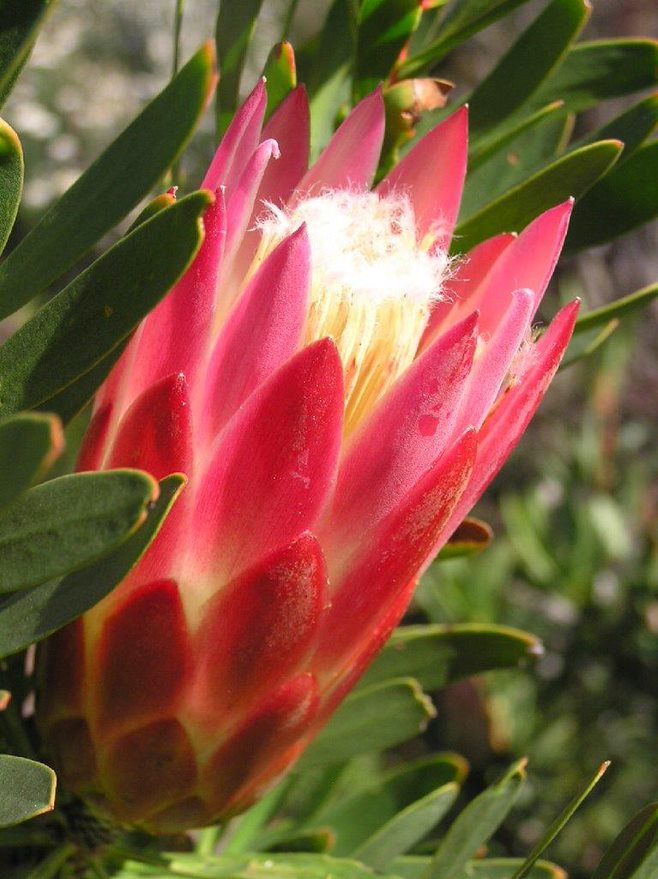
Flowering in April: Cape Sugarbush
Protea repens (family Proteaceae)
The nectar from this protea was used to make a sweet syrup. It is quite a variable species with the flower colour ranging from deep crimson to a pale yellow. It is widespread, occurring across the Northern, Western and Eastern Cape provinces.
The nectar from this protea was used to make a sweet syrup. It is quite a variable species with the flower colour ranging from deep crimson to a pale yellow. It is widespread, occurring across the Northern, Western and Eastern Cape provinces.
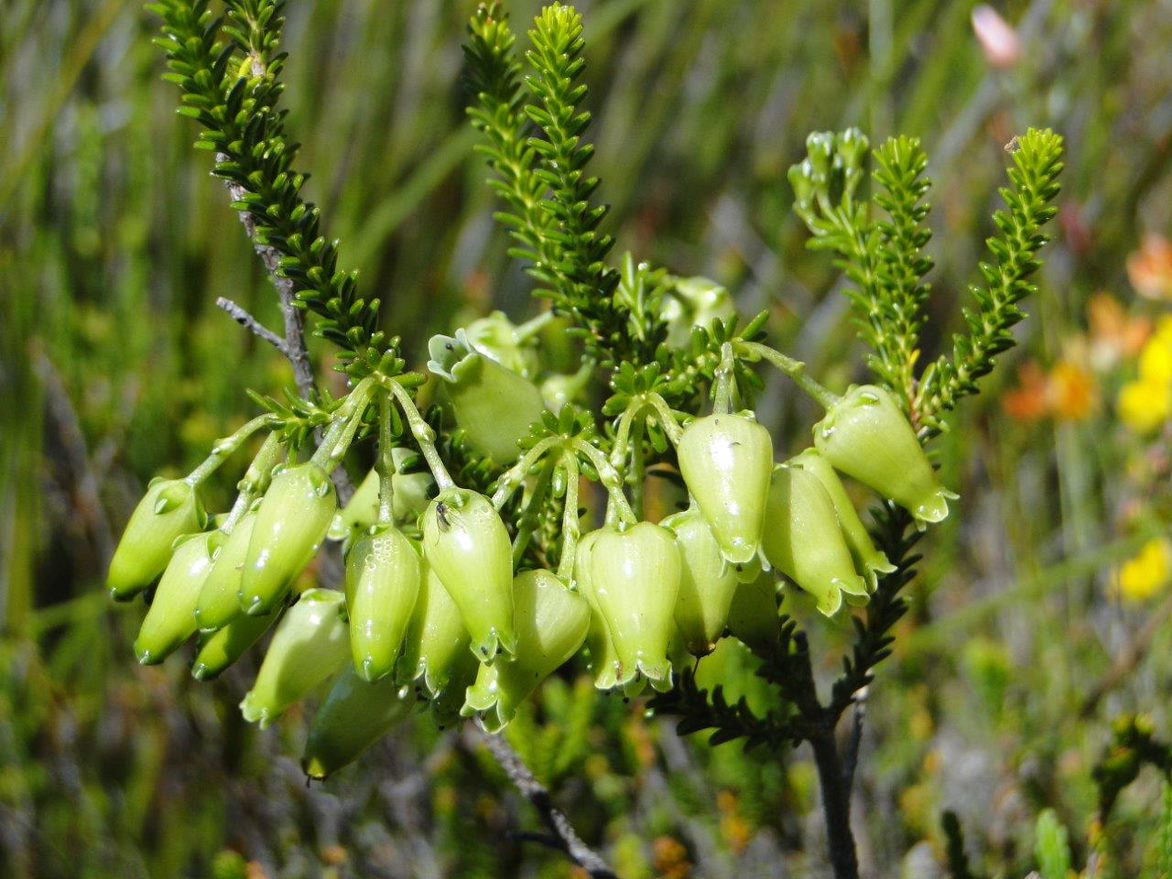
Flowering in May: Sticky Green Heath
Erica urna-viridis (family Ericaceae)
In contrast to Erica cerinthoides (see July, below) this erica grows only on the eastern side of Silvermine – the Muizenberg plateau, and nowhere else on earth! It has very sticky green urn-shaped flowers, and although not especially flashy, are worth looking out for. The plants grow quite tall and leggy.
In contrast to Erica cerinthoides (see July, below) this erica grows only on the eastern side of Silvermine – the Muizenberg plateau, and nowhere else on earth! It has very sticky green urn-shaped flowers, and although not especially flashy, are worth looking out for. The plants grow quite tall and leggy.
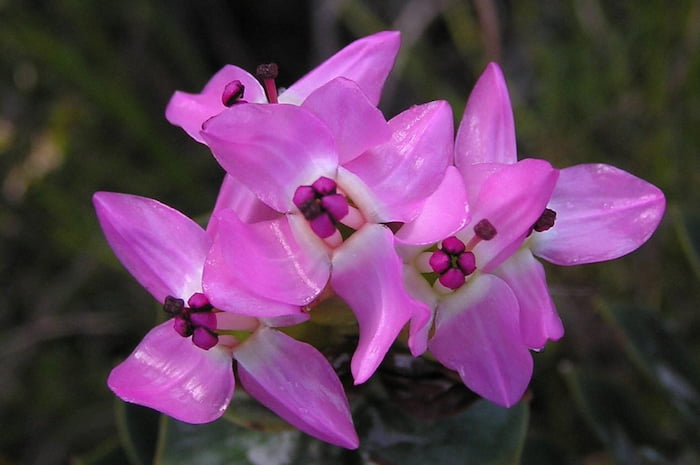
Flowering in June: Cape Fellwort
Saltera sarcocolla (family Penaeaceae)
This lovely bright pink flower looks unusual because the petals fold right back, exposing the thick stamens. Also, the leathery leaves are arranged symmetrically in a pattern up the stem.
This lovely bright pink flower looks unusual because the petals fold right back, exposing the thick stamens. Also, the leathery leaves are arranged symmetrically in a pattern up the stem.

Flowering in July: Fire Heath
Erica cerinthoides (family Ericaceae)
Probably the most widespread of all the ericas, this grows throughout most of the country. Its common name comes from the fact that it resprouts from underground rootstock after a fire. It is one of the earlier plants to flower then, making a lovely display of its bright red flowers in a sometimes blackened landscape.
Probably the most widespread of all the ericas, this grows throughout most of the country. Its common name comes from the fact that it resprouts from underground rootstock after a fire. It is one of the earlier plants to flower then, making a lovely display of its bright red flowers in a sometimes blackened landscape.
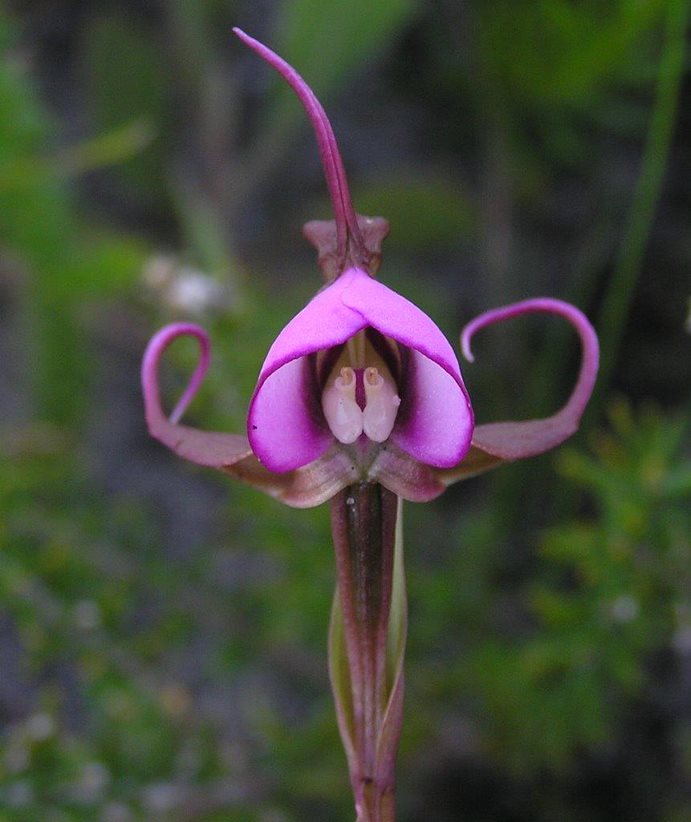
Flowering in August: Moederkappie
Disperis capensis (family Orchidaceae)
The purple “bonnet” of this striking orchid is formed by petals, and the side sepals either stretch out on either side or curl up behind. The top sepal sticks out above the flower. Another mimic that does not produce nectar is pollinated by Carpenter bees who are tricked into visiting because of its resemblance to the nectar-producing Polygala flower.
The purple “bonnet” of this striking orchid is formed by petals, and the side sepals either stretch out on either side or curl up behind. The top sepal sticks out above the flower. Another mimic that does not produce nectar is pollinated by Carpenter bees who are tricked into visiting because of its resemblance to the nectar-producing Polygala flower.
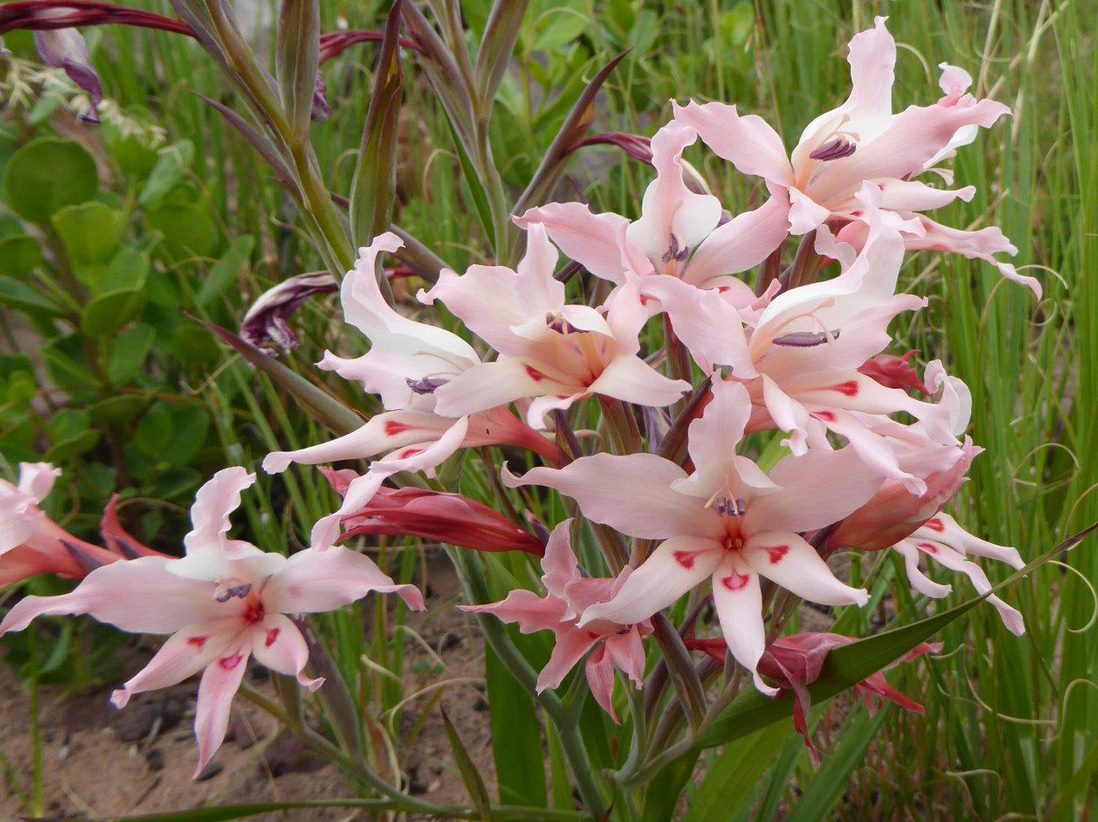
Flowering in September: Painted Lady
Gladiolus carneus (family Iridaceae)
This flashy flower is also abundant after fire. It has reddish markings in the pale- to dark-pink petals which can vary widely, generally spade-shaped. There can be many flowers on the stem.
This flashy flower is also abundant after fire. It has reddish markings in the pale- to dark-pink petals which can vary widely, generally spade-shaped. There can be many flowers on the stem.

Flowering in October: Paper Flower
Dilatris corymbosa (family Haemodoraceae)
The base of the leaves of Dilatris is a deep red, hence its common name of bloodroot. The flowers have stamens that stick out above the petals: two long ones and one short one. The flowers – lilac coloured with brownish tips - are covered in fine hairs.
The base of the leaves of Dilatris is a deep red, hence its common name of bloodroot. The flowers have stamens that stick out above the petals: two long ones and one short one. The flowers – lilac coloured with brownish tips - are covered in fine hairs.
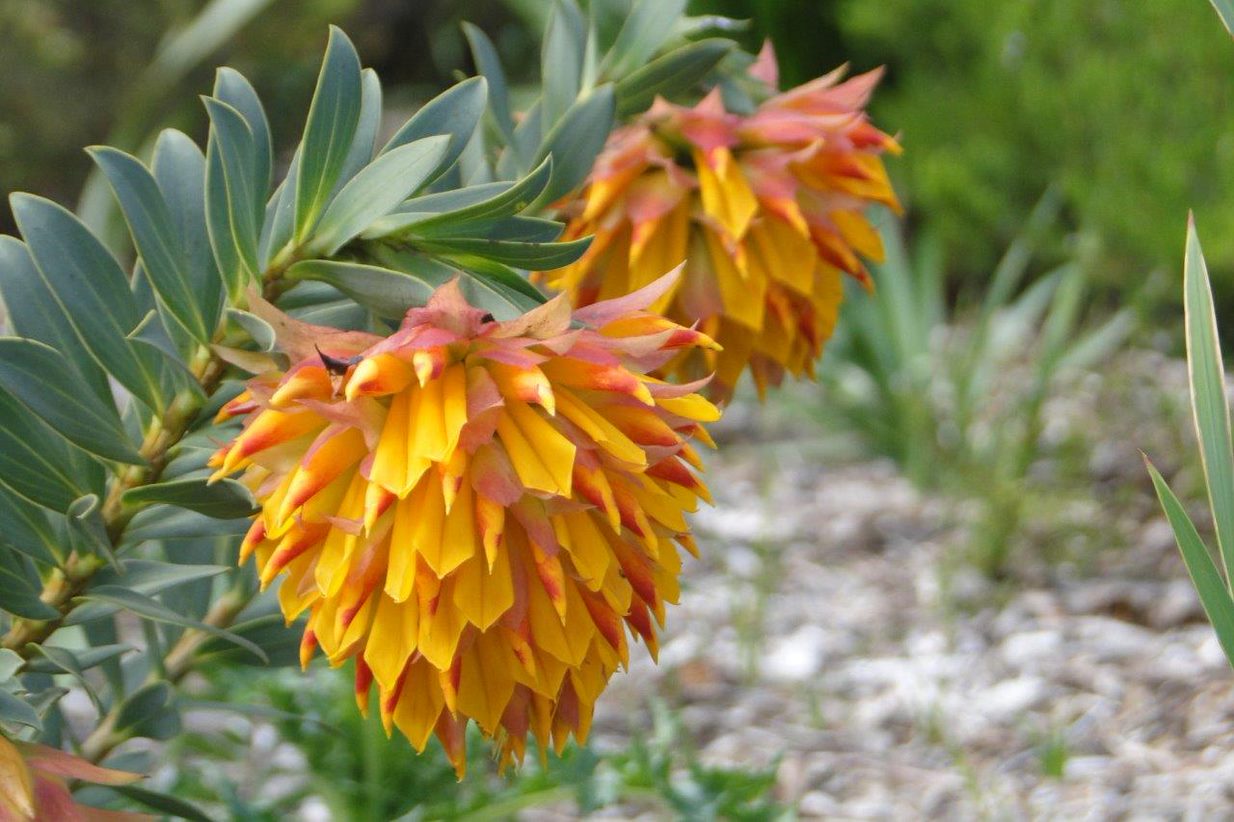
Flowering in November: Mountain Dahlia
Liparia splendens (family Fabaceae)
This showy plant has large yellowy-orange flowerheads that point downwards. They need to be lifted up to fully appreciate their beauty. They have become widespread in Silvermine after the last couple of fires there.
This showy plant has large yellowy-orange flowerheads that point downwards. They need to be lifted up to fully appreciate their beauty. They have become widespread in Silvermine after the last couple of fires there.
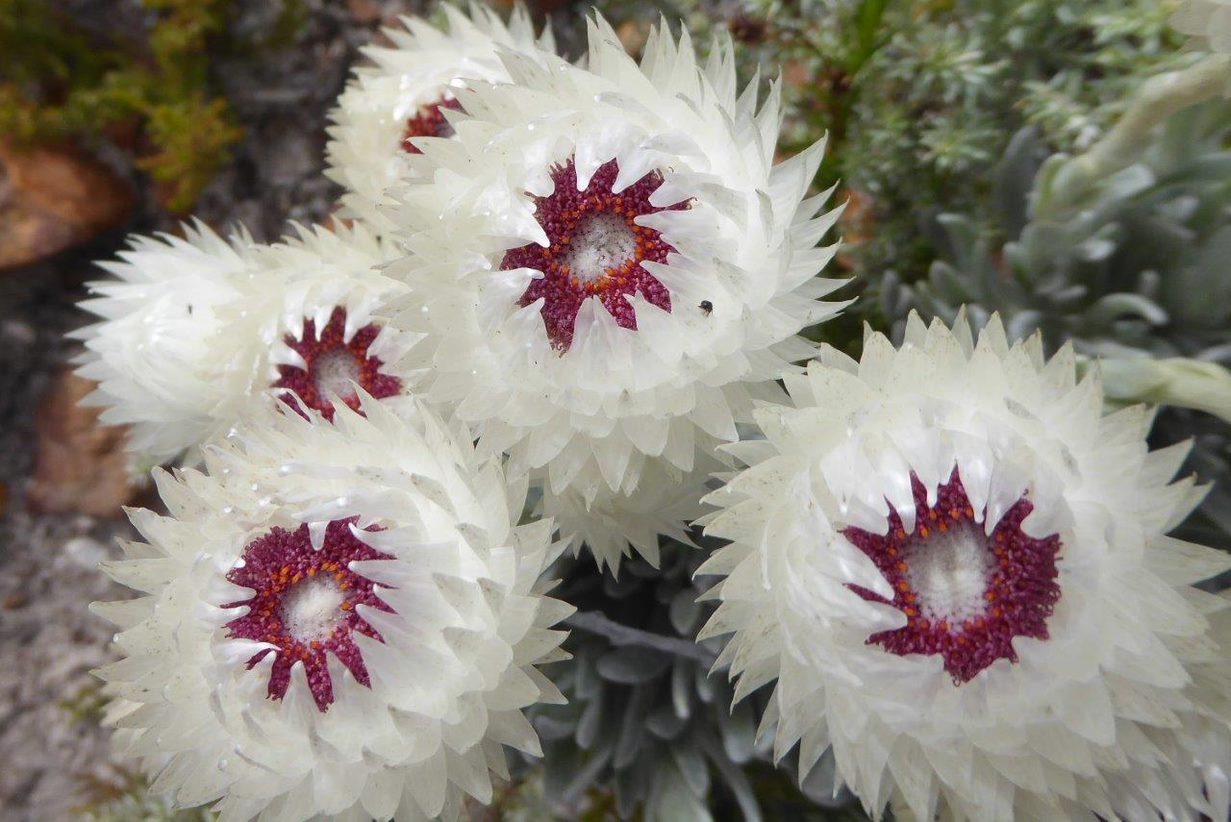
Flowering in December: Cape Snow
Syncarpha vestita (family Asteraceae)
A flower that is beautiful on its own – white, papery bracts surrounding the purple flowers inside - but also when seen en masse, the effect is that of a field covered in snow.
All images by Corinne Merry
A flower that is beautiful on its own – white, papery bracts surrounding the purple flowers inside - but also when seen en masse, the effect is that of a field covered in snow.
All images by Corinne Merry

_large.jpg)
